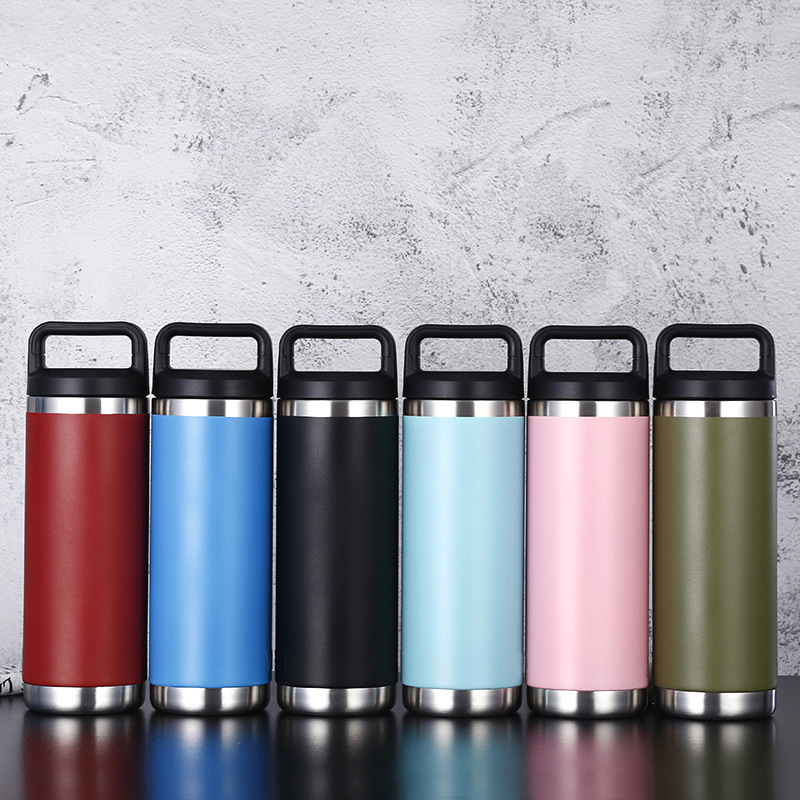How to identify “poisonous water cup”?
I won’t talk much about professional identification, but let’s talk about how we can identify the “poisonous water cup” through observation, contact and smell.
The first is observation,
“Poisoned water cups” are usually relatively rough in workmanship, with poor detail processing and obvious flaws in the material. For example: Check the stainless steel water cup to see if there is any residual paint on the mouth of the cup, whether there is any blackening in the inner tank, especially whether there are obvious signs of rust on the welding of the stainless steel metal seams. Plastic water cups should be inspected through light to see if there are any obvious impurities. Let’s talk specifically about glass water cups and ceramic water cups. Water cups made of these two materials require high-temperature baking. In a long-term high-temperature environment, harmful substances will be eliminated and evaporated, especially glass water cups, even if they are rumored on the market. It is said that some glass drinking glasses are made of recycled materials, which are unhealthy and unsafe to use, etc. Glass itself is a recyclable material, and there is almost no difference between recycled materials and new materials in high-temperature production environments.
Even the glass “toxic water cup” is polluted during storage and transportation after production, and it has nothing to do with the material itself. The situation with ceramic drinking glasses is similar, but unlike glass drinking glasses, many ceramic drinking glasses need to be combined with glaze colors. There are underglaze colors and overglaze colors. This requires special attention, especially overglaze colors. Some colored paints contain heavy metals. , the baking temperature of overglaze color is much lower than the production temperature of ceramic water cups. When high-temperature water is used to make tea, harmful substances such as heavy metals will be released. The editor has explained in detail how to determine whether plastic materials are impurities before, so I won’t go into details today.
Secondly, is there a safety certification?
When we buy a water cup, we can use whether the water cup has safety certification as a health and safety standard. The more certifications a water cup has, the more assured it will be when purchasing it. However, everyone must know that any certification requires a cost, and the more certifications are passed, the more The more, the higher the production cost of this water cup is, so the price of such a water cup is usually not very low. Friends, don’t think that water bottles with more certifications are not worth it and buy cheaper water bottles instead just because the receipts are high. The editor does not rule out that cheap water cups are “poisonous water cups”, but the possibility of water cups with many certifications being “poisonous water cups” is almost zero. These certifications are usually national 3C certification, EU CE mark, US FDA certification, etc. Please remember what I said: Products with certification marks are usually more reliable.
Next is coating inspection,
This point is passed over here, because it is difficult to judge through our eyes. At most, we can only look at whether the spraying is uneven and whether there is any residue on the mouth of the cup.
About whether it is easy to clean?
Is there any discoloration in the newly purchased water cup? Although these are indeed factors in judging whether it is a “poisonous water cup”, it is difficult to judge without some accumulation of professional knowledge. Let’s focus on the taste. Whether it is stainless steel water cup, plastic water cup or water cup made of other materials, a standard water cup should be odorless when leaving the factory. Water cups with strong odor or pungent odor are not qualified. The generation of odor is usually a problem of materials and improper storage and management. But no matter which problem it is, if the odor is very strong or even pungent, then this water bottle will be worth it no matter how big the brand, how beautiful or how cheap it is. Do not use. Finally, I want to emphasize that yes, no matter what material the water cup is made of, it should be odorless when it leaves the factory and reaches consumers. No rebuttal is accepted on this point.
Post time: Jul-25-2024
